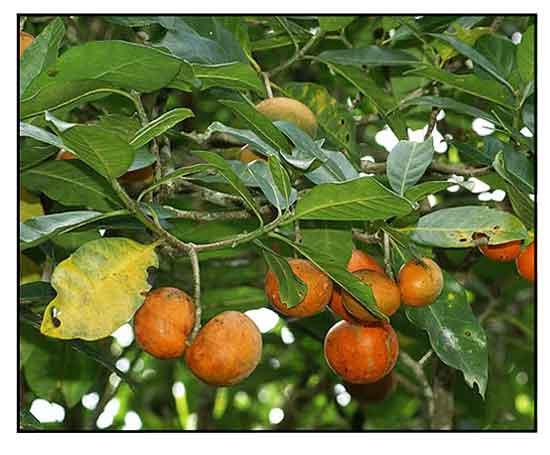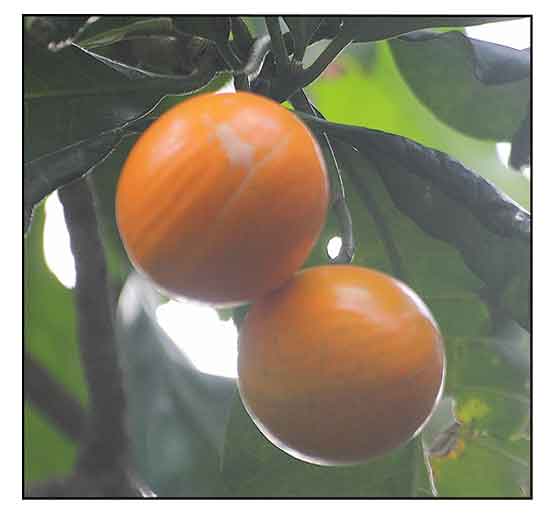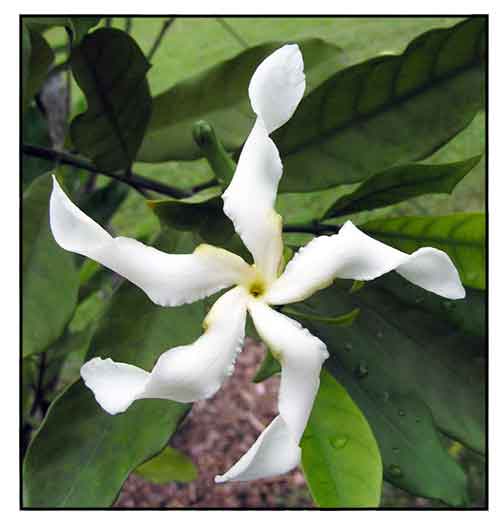
Family • Apocynaceae
Pandakaking gubat
Taparak
Tabernaemontana macrocarpa Jack
MILKWOOD
| Scientific names | Common names |
| Ervatamia macrocarpa (Jack) Merr. | Kalipsa (Tag.) |
| Ervatamia macrocarpa (Jack) Merr. | Lampada (Bataan) |
| Orchipeda sumatrana Miq. | Pandakaking gubat (Tag.) |
| Pagiantha macrocarpa (Jack) Markgr. | Taparak (Tag.) |
| Pagiantha megacarpa (Merr.) Markgr. | Milkwood (Engl.) |
| Pagiantha plumeriifolia (Elmer) Markgr. | |
| Tabernaemontana macrocarpa Jack | |
| Tabernaemontana megacarpa Merr. | |
| Tabernaemontana plumeriifolia (Elmer) Merr. | |
| Neuburgia sumatrana (Miq.) Boerl. | |
| Voacanga plumeriifolia Elmer | |
| Tabernaemontana macrocarpa Jack. is an accepted species. KEW: Plants of the World Online | |
| NOTE: In the Philippine plantology of common names, pandakaki is shared by Tabernaemontana macrocarpa (Tapararak, Pandakaking gubat), Tabernaemontana pandacaqui ( Pandakaking puti, Kampuput, Banana bush), Tabernaemontana divaricata ( Pandakaking-tsina, Crape jasmine). | |
| Other vernacular names |
| BORNEO: Bongang, Burut-burut, Lampadak, Kayu gegah, Kelampan, Merbadak, Mpayak, Pelir kamging, Tara manag, Teramata. |
| INDONESIA: Leluting tokak, Selutui puka, Pasa, Haju pasa. |
August 2024
![]()
 |
| PHOTOS / ILLUSTRATIONS |
| IMAGE SOURCE: Tabernaemontana macrocarpa / © Deny Wahyudi / Some rights reserved / CC BY-NC / Click on image or link to go to source page / iNaturalist |
| OTHER IMAGE SOURCE: Tabernaemontana macrocarpa leaves and fruits / © Marina Khaytarova / Non-commercial use / / Image modified / Click on image or link to go to source page / TopTropicals |
| OTHER IMAGE SOURCE: Tabernaemontana macrocarpa flower / Singapore Botanic Gardens / 阿橋 HQ / CC BY-SA 2.0 / Image modified / Click on image or link to go to source page / Wikipedia |
Additional
Sources and Suggested Readings |
• |
DOI: It is not uncommon for links on studies/sources to change. Copying and pasting the information on the search window or using the DOI (if available) will often redirect to the new link page. (Citing and Using a (DOI) Digital Object Identifier) |
| List of Understudied Philippine Medicinal Plants |
| New plant names needed The compilation now numbers over 1,500 medicinal plants. While I believe there are hundreds more that can be added to the collection, they are becoming more difficult to find. If you have a plant to suggest for inclusion, native or introduced, please email the info: scientific name (most helpful), local plant name (if known), any known folkloric medicinal use, and, if possible, a photo. Your help will be greatly appreciated. |
• |
 |

 Gen info
Gen info

